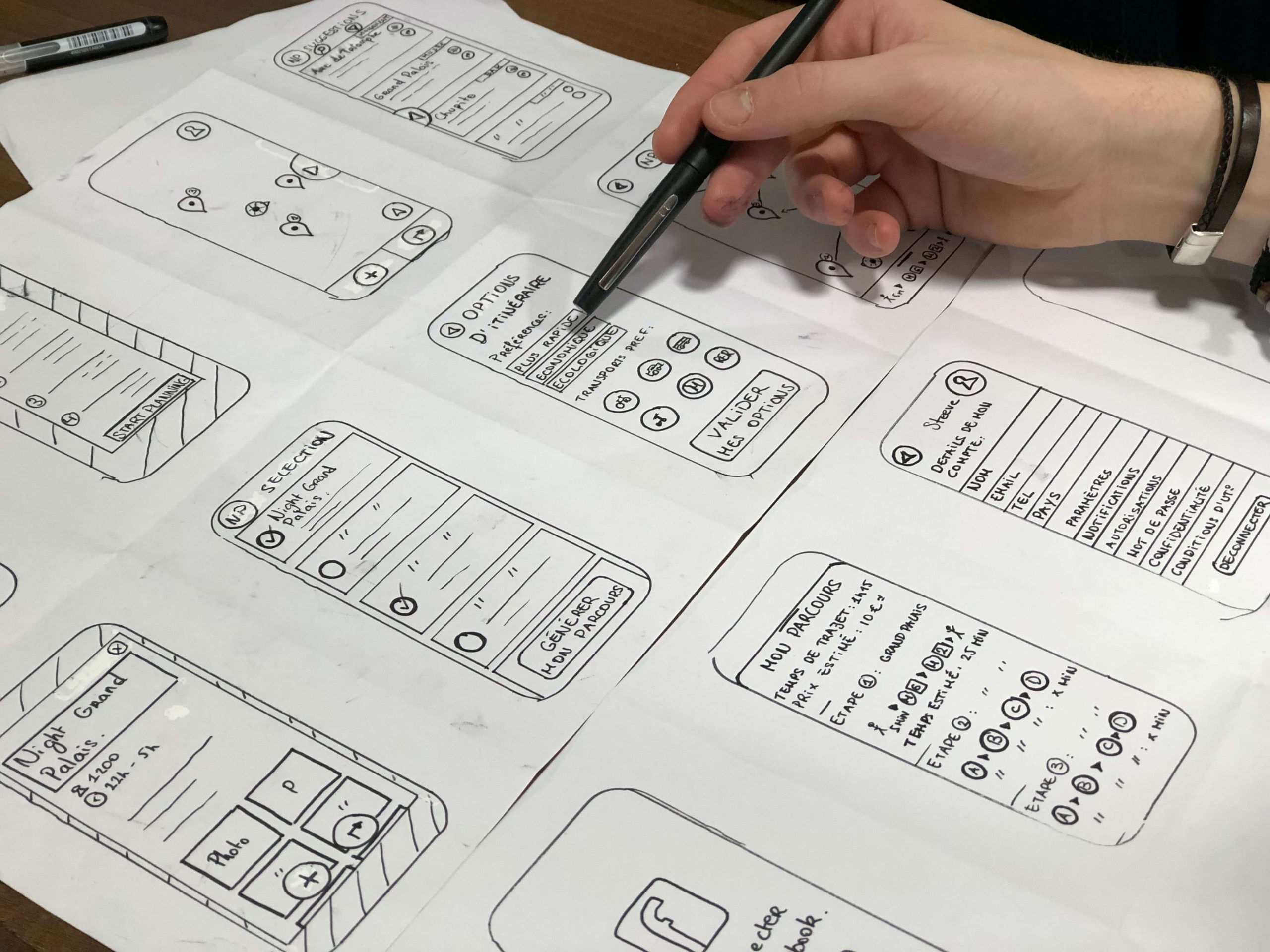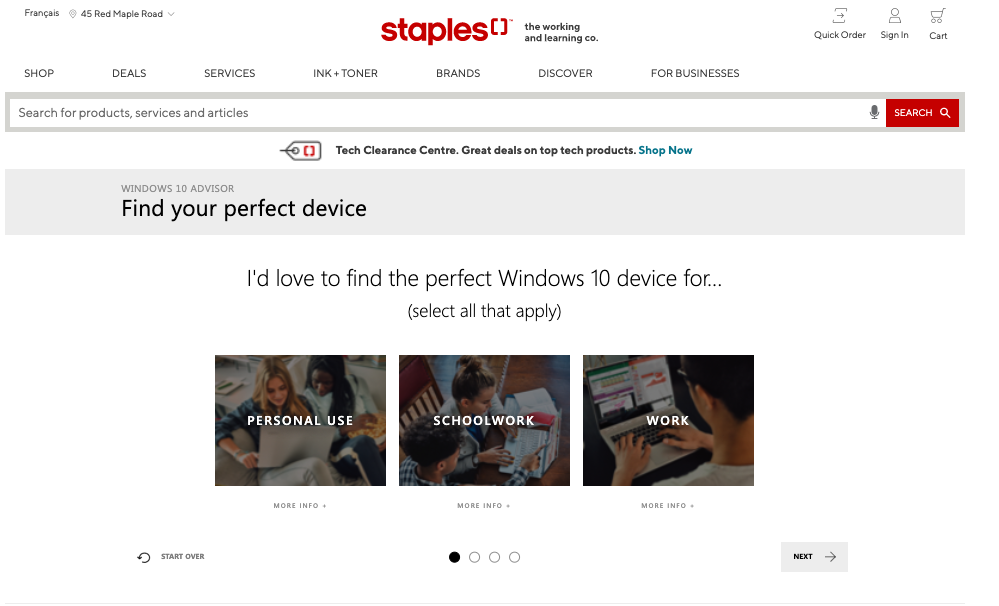Conversational Design is quickly becoming today’s most sought-after solution for driving digital sales and improving customer satisfaction. In fact, according to OctaneAI, companies implementing Conversational Design see an incredible whopping 7% to 25% rise in annual sales. Once upon a time, a human sales associate was a company’s most effective ROI, but in today’s digital age, going from door to door to sell products or services is simply not the answer to scaling your business—having a digital assistant is, an Al-powered digital assistant that can engage in rich, intuitive, and helpful conversation with a human being.
What is Conversational Design?
Think about the last conversation you had with a friend. Do you recall how natural and seamless the interaction felt, almost like breathing in that you didn’t have to actively think about commanding your mouth to move? Well, Conversational Design is similar—it derives from UX design and copywriting, and is the way a user experiences communication with a business or a service by interacting with an automated conversation interface that learns along the way. It’s a synthesis of several design disciplines, including voice user interface design, interaction design, visual design, motion design, audio design, and UX writing.
Good Conversational Design achieves the goal of leading online customers into a conversation that feels and progresses as smoothly as it would if they were interacting with a human being. Delivering an effective (and scalable) conversational design strategy, however, can be daunting, but with the right information, guidance, and technology, it’s easier than you may think to be successful at it.
What does ‘Good’ Conversational Design look like?
Companies who excel at conversational design and conversational experiences offer online customers the best assistance possible in their buyer’s journey. This is achieved by having a conversational design strategy that is supported by a few critical components that, when approached strategically, drive results. Some of these components include:
- Having the right technology – Scaling a conversational strategy requires training data that equips your digital assistant for effective online engagement, privacy data to ensure no ethical boundaries are being crossed, and the technology that enables your digital assistant to leverage human interaction and be able to communicate in multiple languages.
- Understanding the correct fundamentals – Familiarizing yourself with the Psychology of Conversation and the Cooperative Principle is your next step to conversational design mastery. This is key—to understand the full extent of how humans operate, is to gain insight that will drive the results you’re looking for.
- Conveying knowledge – Remember, you don’t want to overwhelm your online customer but educate with short and concise bits of information that guarantee a buyer’s journey is smooth and successful. After you’ve established the first two steps, your next move is to implement a conversation that is tactful and full of care to further improve the effectiveness of your conversational strategy.
- Creating the right persona – Because human beings are drawn to human tendencies, creating an Al-powered digital assistant with human characteristics – like a human face, or a quirky voice – will appeal to a basic human need that, in turn, will make customers inclined to trust you with helping them achieve their objectives. Factor in this fundamental element in human design into your conversational strategy, combined with the first three steps, and you’re set for propelled success in your respective field.
4 Examples of Great Conversation Design
When it comes to creating a good conversational design, the ultimate goal is to make the digital experience as human-centric as possible, something we delved deep into during a webinar we held with the Conversation Design Institute. We sat down with the CEO and co-founder of the Conversational Design Institute, Hans Van Dam to discuss the importance of having a great conversational strategy, and touched on some of the best examples of what that looks like:
1. Personalize the Conversation
It’s important to establish trust between you and your customer. To do this, personalize the conversation you’re having. Ask important questions that imply you care and that their needs matter.
- “Are you looking for anything specific?”
- “How can I assist you today?”
- “How old are you?”
The simple question of “What is your baby’s name?” creates an immediate connection and trust between the customer and the brand: Gerber wants to find the best food and supplements for that customer’s bundle of joy. Throughout the digital assistant, Gerber continues to connect with their customer with subtle nods to personalization.

Now, depending on what you’re selling, you’ll need to be very intentional about how to build that trust from the beginning. Take timeout to assess your product or service, and ask yourself who is the person your business is interacting with.
2. Start the Conversation in the Right Way
When a potential customer lands on your site, invite them to enter a conversation by asking easy-to-understand questions like:
- “What are you looking for?”
- “How would you like to use our product?”
- “Welcome! Choose from the below table where you’d like to go next.”
Dräger is a manufacturer of medical and safety technology, and a great example of what starting the conversation in the right way looks like when assessing their digital assistant: off the bat, online visitors are asked to choose the country they are based in, enabling Dräger to cater to the unique needs of their wide range of potential customers. Such meticulous care in their conversation strategies shows just how serious they take customer experience on their website.
 By starting the interaction the right way, you’re setting up the buyer’s journey for success. Being mindful of the process involved in a customer’s journey will help you lay an easy-to-follow path for them so that, by the end, they leave your site happy that they came.
By starting the interaction the right way, you’re setting up the buyer’s journey for success. Being mindful of the process involved in a customer’s journey will help you lay an easy-to-follow path for them so that, by the end, they leave your site happy that they came.
3. Use Intuitive Opening Questions as a Teaser
A great idea presented during the webinar is also to use opening questions as a teaser in the form of interactive banners. When a user clicks the online assistant, the first question a customer may ask is already selected, creating less work for the customer and helping to ensure that they have a pleasant experience interacting with your online business.
- “I’d love to find the perfect device for…”
- “I am looking for something that helps clean my…”
- “Where can I find information on your…”
For example, Microsoft uses digital assistants to help customers find the perfect laptop for them with a straightforward product discovery experience that opens up with identifying what the customer will use the device for.
4. Build Conversations around a Customer’s Needs
Again, creating human-centric communication is essential to having good Conversational Design. Each conversation should be directed around what a customer’s needs and wants are. Siemens does a great job with this. Their communication is strategic in that they’re focusing on what customers need and look for when they land on their site. Some of the questions asked include:
- “How important to you is the washing machine’s noise level?”
- “Which extra benefits should your washing machine offer?”
- “Here are our top recommendations for you.”
The world is evolving, and so should your business
We live in a digital world that is only growing more sophisticated each year, raising the standard for customer service and product accessibility. Adapting to today’s age will allow your business to stay ahead, and by investigating which educational resources are out there, and where to find the right technology to initiate your conversational strategy, you’re setting up your business for future profits and expansion.
To learn more and to gain a better understanding of what Conversational Design can do for you, have a look at the webinar we mentioned above. Or you can get in touch with us today.



